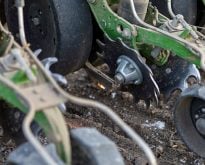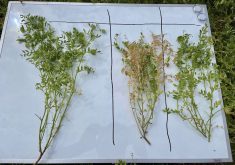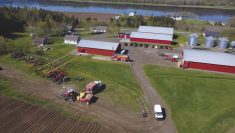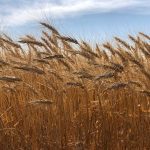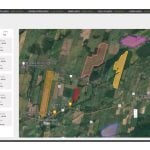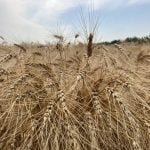For many potato farmers in Canada, 2022 was a challenging year. There were some major weather difficulties to contend with — cold, wet springs delayed planting for producers in New Brunswick, Quebec, Manitoba and B.C. and in some cases contributed to later harvests as well. Harvest was also held up in P.E.I. after the tail end of Hurricane Fiona lashed the Island in late September. But a challenge shared by every Canadian potato farmer was how to deal with considerable hikes in the cost of production spurred in part by the war in Ukraine.
Victoria Stamper, general manager of United Potato Growers of Canada, says producers felt the financial strain from high fertilizer, fuel, transport and labour costs throughout 2022. “It has been a really tough year for a lot of the growers,” she says.
Kevin Brubacher, general manager of the Ontario Potato Board, agrees. “This past season was the most expensive we’ve ever seen,” he says. “Fertilizer was a big part of that, but for everything across the board, we saw increased costs associated with it.”
Read Also
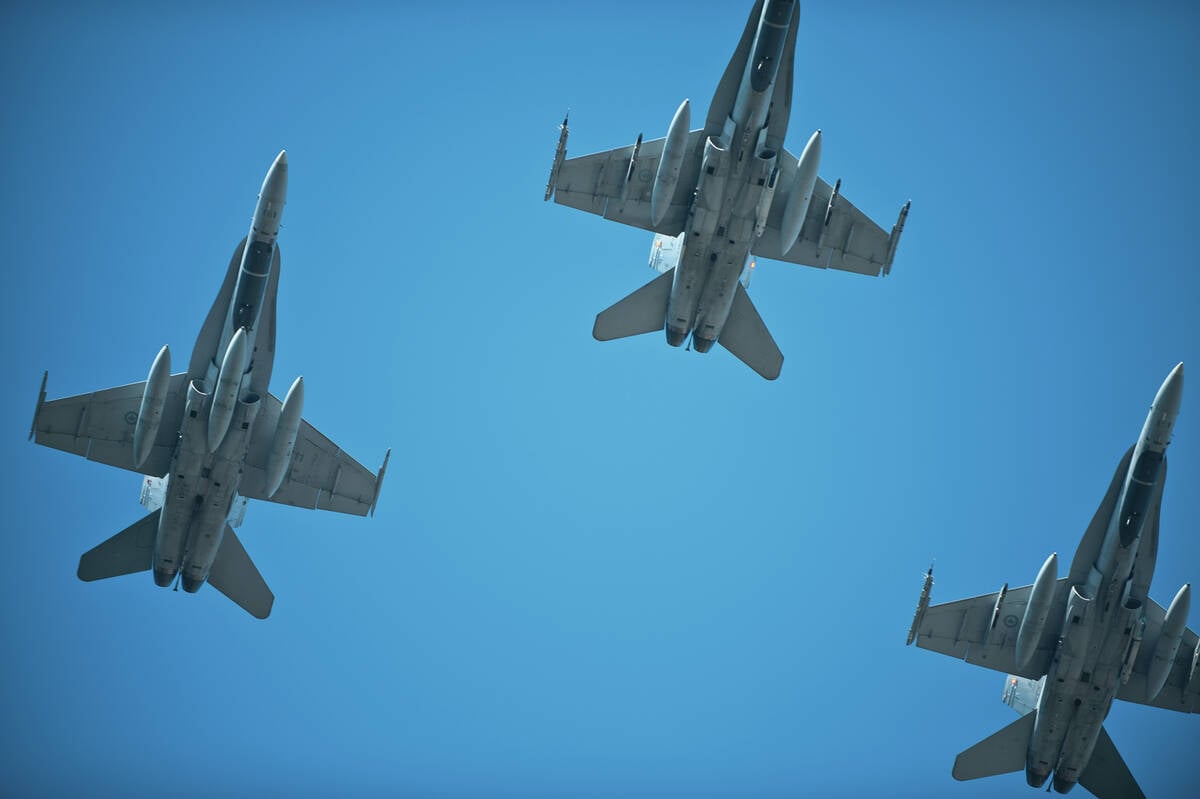
Will investments in defence benefit Canadian agriculture?
A bump in Canada’s NATO spending commitments could lead to infrastructure investments that would benefit rural areas
Dan Sawatzky, general manager of Manitoba’s Keystone Potato Producers Association, says he doesn’t see much relief in sight. “The ability to buy fertilizer when the prices are lower is gone,” he explains. “I anticipate they will continue to be high throughout this spring, so there’s no window of opportunity this year to buy cheaper inputs.”
Brubacher says in contract negotiations with some of their major customers last year, potato producers for Ontario’s chipping sector were able to secure price increases to help offset the higher price tag for crop inputs. But he says it wasn’t enough to cover all the costs.
Sawatzky says processing potato producers in Manitoba managed to negotiate a bit of an increase in pricing in 2022, “so that helped to at least keep growers on an even playing field. Going forward, we’ll have to negotiate something to help out with those rising input costs in 2023 as well.”
Statistics Canada figures released December 7 showed the average potato yield in Canada in 2022 was 322.4 hundredweight per acre, up 0.2 per cent from 2021. Total production was also up — Canadian farmers produced just under 123 million hundredweight of potatoes, a 0.8 per cent increase from 2021.
Stamper notes the bump up in total potato production in Canada was due to increases in planted acres and yields in certain parts of the country. The overall planted acreage in Canada in 2022 was 386,591 acres — a 0.9 per cent increase that was largely due to increased demand for processing potatoes in North America.
Stamper says good weather at harvest helped farmers bring in almost all of the planted potato crop. “Weather conditions were very favourable during the harvest season across Canada, which permitted most growers to harvest the vast majority (98.7 per cent) of the total seeded area.”

Atlantic Canada
Total potato production in New Brunswick dropped 6.6 per cent to 17 million hundredweight and the average yield was down too, declining 5.9 per cent to 329.5 hundredweight per acre.
In Prince Edward Island, total production fell 2.2 per cent to 26.6 million hundredweight of potatoes. A big reason for this drop is the continued export ban on seed potatoes grown in P.E.I.
Canada stopped sending P.E.I. potatoes to the U.S. on November 21, 2021, after potato wart fungus had been detected a few weeks earlier in two fields on the Island being monitored by the Canadian Food Inspection Agency. The export ban on table potatoes to the U.S. was lifted in April 2022, but P.E.I. seed potatoes are still barred from shipment to the United States pending the outcome of a U.S. Department of Agriculture review.
The average potato yield in P.E.I. was up in 2022, however, climbing 0.9 per cent to 324.8 hundredweight per acre. Greg Donald, general manager of P.E.I. Potato Board, attributes the yield increase to good growing conditions on the Island.
“We had a really good spring as far as planting goes,” Donald says. “Early in the season we had better than average heat units and good moisture (and) we probably some of the nicest looking plant stands I’ve ever seen.”
Donald says the good weather lasted until the first or second week of August when it turned dry. “You can almost draw a line down the middle of the Island — the eastern half was dry and then the western half continued to get decent rains almost weekly. That did impact the final yield a little bit more in the eastern end.”
September saw Fiona, categorized as a post-tropical storm by the time it hit P.E.I. but still packing up to 140 km/hour winds, whip through the Island. “That was the worst storm we’ve ever seen,” says Donald. “It was like nothing folks had ever experienced before.”
Donald says P.E.I.’s potato harvest was delayed by four or five days due to widespread power outages and fallen trees that had to cleared from roads and farmers’ fields. “Many of our farms didn’t have any power to run bin pilers and sorting equipment and dirt eliminators and ventilation systems in warehouses.”
Donald says the saving grace after Fiona was “absolutely gorgeous weather” that continued well into fall.
“We needed it because of Fiona. We were really lucky we had good conditions,” he says, adding it allowed Island potato producers to finish harvest more or less on schedule. “I think farmers were really happy with the crop.”
Central Canada
Total potato production in Quebec was 14.9 million hundredweight last year, a 5.8 per cent increase from 2021. Average yield was up slightly to 308.7 hundredweight per acre, a 0.2 per cent increase. Ontario saw its total production numbers fall 8.9 per cent to 8.2 million hundredweight. The average yield was also lower, dropping 8.4 per cent to 219.9 hundredweight per acre.
Brubacher notes while there was a sizable drop in Ontario’s total production number in 2022, “it’s not as terrible as we anticipated during the summer.” He says the potato season started well for farmers but tailed off after that.
“We had some good rains after planting, but then the taps turned off and we didn’t see any (rain) until just before the end of August,” says Brubacher. “We had extremely dry weather, but for the most part we didn’t get any long-standing heat waves. The nighttime temperatures actually were fairly favourable through the summer.”
Brubacher says this meant most potatoes going into storage were good quality, although they were generally smaller due to the dry summer weather which interfered with the bulking process.
Western Canada
In Manitoba, total production was up 4.9 per cent to 26.1 million hundredweight in 2022 and the average yield climbed 3.2 per cent to 329.8 hundredweight per acre. Total production in Saskatchewan dropped 4.5 per cent to just under 1.5 million hundredweight and the average yield increased 2.0 per cent per cent to 250 hundredweight per acre.
Alberta saw an 8.9 per cent jump in total production to 26.8 million hundredweight and the average yield was up 3.6 per cent to 375.9 hundredweight per acre. In B.C., total production was down 23.1 per cent to 1.6 million hundredweight while the average yield was 320 hundredweight per acre, a 1.5 per cent decline from 2021.
Sawatzky says about 1,500 acres of potatoes in Manitoba had to be disced under in the spring due to crop damage caused by cold, wet weather, but things improved after that.
“We had a late season as we were about three weeks behind in our planting,” he says. “We did have ideal growing conditions though. We didn’t have the (extreme heat) some of the other areas did.”
Sawatzky says the good weather helped the Manitoba potato crop catch up, so it was only a week or so behind by the end of August. Some September rain delayed harvest for a few days and resulted in a few storage losses due to pink rot in some flooded fields.
“It was mid-September when guys got going in earnest,” says Sawatzky. “Most growers like to try and be done by October 1. I think there were only a few who made that deadline, so harvest dragged on longer than most years.”
Sawatzky notes an early October frost did a little bit of damage in some areas, but nothing severe enough to cause much storage breakdown.
Stamper says a July hailstorm as well as high temperatures throughout August tempered yield expectations for the Alberta potato crop, but favourable harvest conditions helped boost the average yield numbers in 2022 from the previous year.
“This larger crop will be welcome with an overall tight supply of processing potatoes in North America this season,” she says.
According to Stamper, the large drop in total production in British Columbia in 2022 reflects a cold, wet start to the year, followed by little rain and high temperatures throughout August and into September, which really put a damper on the potato crop in that province.
“B.C. was planting almost into June. They’re usually done way ahead of that. They were really, really behind,” says Stamper. She adds after mid-September, temperatures dropped nicely and produced good conditions for harvest, enabling growers to get most of the crop out of the ground despite dry ground in some areas.
– This article was originally published in the 2023 edition of the Potato Guide.



